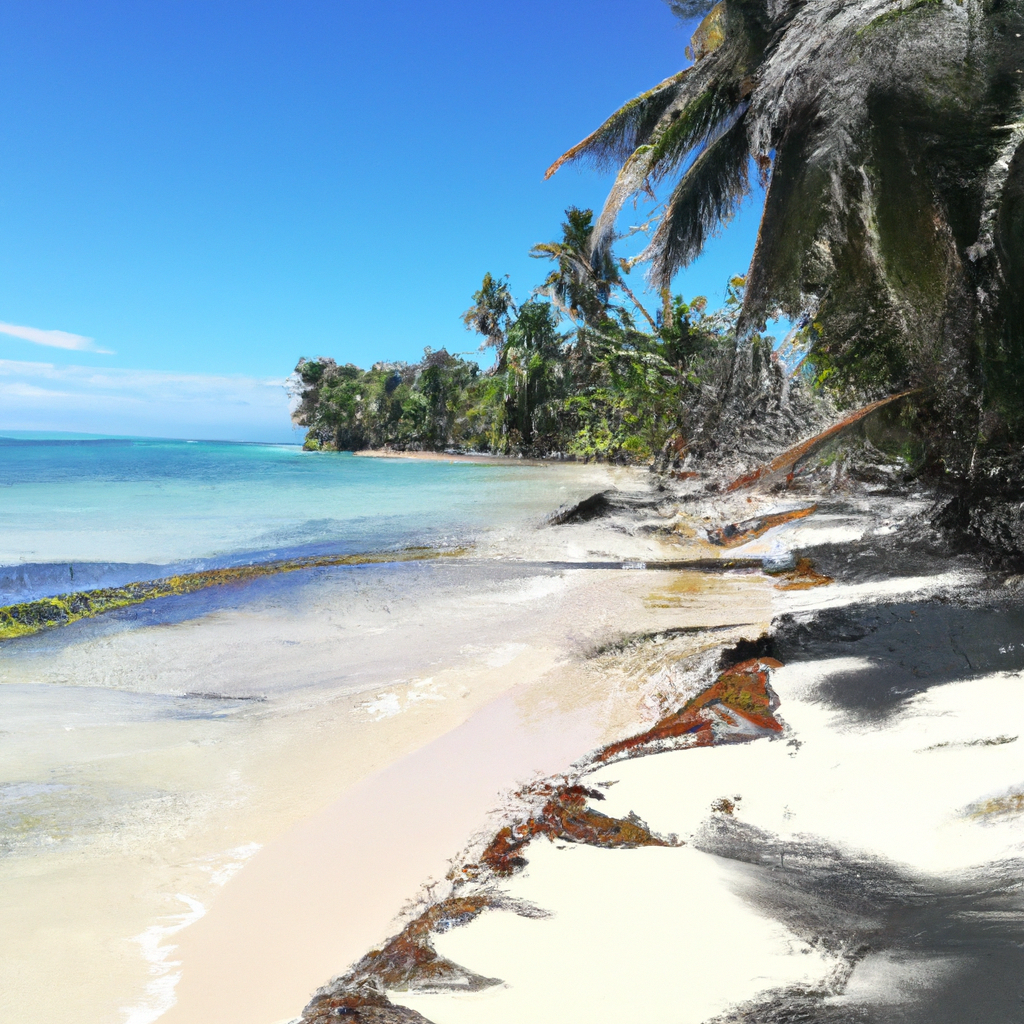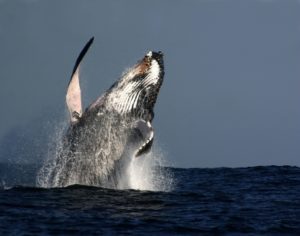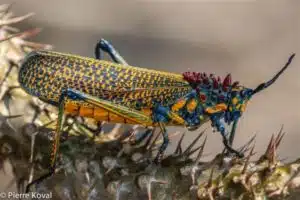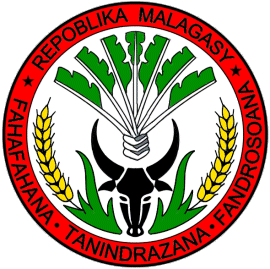Sainte Marie Island
Sainte Marie Island, also known as Nosy Boraha, is a popular travel destination in Madagascar.
Located in the northeast of Madagascar, Sainte Marie Island is a 49 km long and 5 km wide tropical paradise, an idyllic landscape with small fishing villages and pristine beaches. Authentic and preserved, it promises you a change of scenery!
The former pirate hideout boasts lush vegetation and a high-quality underwater world.
Indeed, the island’s lagoon features significant coral formations, allowing it to have a preserved natural heritage.
Protected from sharks, it is also the refuge of humpback whales who come here to breed and give birth during mating season.
The island is full of stories and various activities to discover with family and friends.
Here you will find exceptional diving spots, dream beaches, and forest trails that will delight nature lovers.
The island of Sainte-Marie is an authentic place that has remained untouched by mass tourism, a true haven of peace.
The Pirate Cemetery and the Buccaneer Island
Located near the capital Ambodifotatra, the Pirate Cemetery features graves marked with skulls.
Not far from the ist ein beliebtes Tauchziel für Abenteurer, die die Geheimnisse der versunkenen Schiffe erkunden möchten. Mit einer reichen Geschichte als Pirateninsel bietet Sainte Marie heute eine einzigartige Mischung aus Geschichte, Kultur und Abenteuer für Besucher, die die Insel erkunden möchten. Besuchen Sie unsere Website, um mehr über unsere Angebote für Reisen nach Sainte Marie zu erfahren. is home to legendary pirates such as John Avery, Christophe Condent, Thomas Tew, William Kidd, and Olivier Le Vasseur. Around 1720, the island of Sainte-Marie became the home port of about twenty ships and the residence of a thousand pirates.
The Pirate Cemetery or Cemetery of Saint-Pierre is located in front of the small Madame Island, in front of the first church of Madagascar (1857) and the island of the privateers… A site full of history, evocative names that will make you dream of the adventures of the privateers.
Privateers, Corsairs, Pirates; a confusing collective term
Pirates are independent sea robbers, they attack everything within their reach. What happened to the Pirates of the Caribbean and what interesting and valuable cargoes it contains.
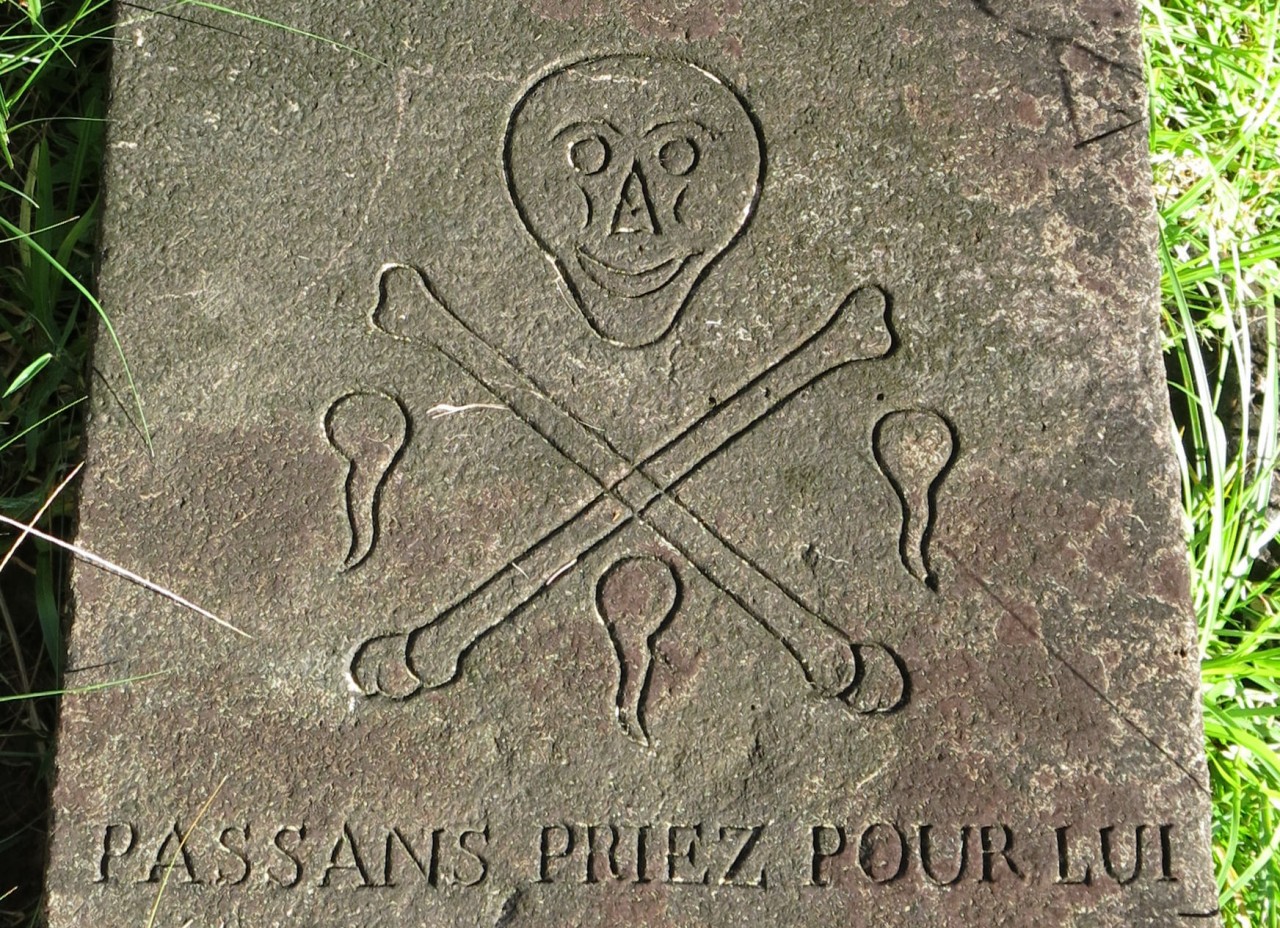
The pirates spread to the Indian Ocean, mainly in the east of Madagascar and also on Reunion Island.
The buccaneers, in turn, received a mark or commission letter from their ruler authorizing them to attack enemy merchant ships.
Pirates were the scum of the Caribbean and the Gulf of. famous pirates who settled on the island of Sainte Marie at the end of the 16th century, attacking ships and trade fleets loaded with spices and treasures from India.
The Forbans Island (Bay of Forbans)
What an evocative name that takes us on romantic adventures.

On this island, the loot was divided and pirate assemblies were held.
Many of them settled on Sainte Marie, many traces of this history are still preserved in Sainte-Marie. For example, in the Forbans Bay, just a few meters deep, there are still several dozen authentic pirate ships.
Refuge of Pirates in the Early 18th Century
Sainte-Marie is located on two important trade routes from the 17th century: the Red Sea and the Indian Ocean.
Even then, the population was hospitable, food was abundant, and no. European power held the island.
Throughout the century, the nearby region became particularly popular with pirates, as the Caribbean, once a popular gathering place for international buccaneers, became too dangerous.
In general, European nations no longer tolerated piracy and promoted the hunting of pirates through their naval patrols in Caribbean waters.
The rumor of easily acquired riches made in the Indian Ocean spread across the seas, the enthusiasm for these havens was so great that European nations were concerned about the impact and the commercial and geopolitical role of this area not under their control.
Offering amnesty to pirates who regret and would like to return home.
The island, pacified by the Royal Navy and already occupied by the French in 1750, became a French colony around 1820-1822.
There are still many graves of outlaws on the island.
Libertalia – the utopian pirate republic
Like the democratic Republic of Libertalia, it seemed that the ideals of equality, freedom, and brotherhood were becoming a reality.
In this excerpt from the famous General History of the Most Famous Pirates (London, 1724-1728), the author describes. The adventures of the very famous Robinson Crusoe (1719) inspired the story of Captain Misson, “the gentlest man in his own way who ever sank a ship or slit a throat”, and his accomplice, the heretic Carraccioli, who grew tired of ruling the seas and decided to settle in Madagascar to establish an egalitarian republic while continuing to plunder passing ships. Property was abolished, resources were pooled; class, gender, and race differences disappeared.
Libertalia was founded under Louis XIV by two men who had broken the law: a Frenchman, Captain von La Victoire, commanding a fearsome warship with 30 cannons, and a Dutchman, Captain Tew, who had been a pirate in the Caribbean. Kanonen, former officer of the French Navy, but a pirate of his own state, Olivier Misson, who was petrified by utopias and the Italian priest Carracioli, who was expelled from the priesthood and imbued with mysticism.
After dropping anchor in Madagascar, they convinced the crew to establish the ideal society.
According to some authors, this colony was much more than just a refuge for pirates and buccaneers: it was a true political, social, and philosophical utopia, the modern equivalent of Atlantis or Eldorado.
However, this will only be temporary.
Île aux Nattes and Île aux Sables
Off the south coast, the tiny Île aux Nattes and Île aux Sables are lined with coral reefs and populated by sea turtles.
Île aux Nattes, the essence of a tropical paradise
South of Ambodifotatra lies Ile aux Nattes, a small paradise island 2.5 km long, still preserved in its natural state, without any development and without road infrastructure.
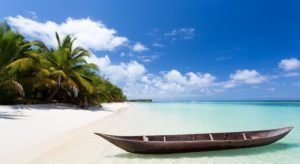
Dive into a suitable lagoon with turquoise water, sandy paths leading through the small island.
The origin of the name is said to come from a wood called “nato” that was used in the past for shipbuilding. Today, it has completely disappeared from the island.
One could also think that the name is related to the beautiful mats woven by the women of the island using pandanus leaves.
The island is located south of Sainte Marie Island, separated from Sainte-Marie Island by a magnificent lagoon with clear blue water, completely surrounding the island and separating it from the Indian Ocean through a.
Important and magnificent coral reef separates.
On Ile aux Nattes, there is an endemic orchid (Eulophiella Roempleriana) that blooms in September and October, living in swampy areas and on the pandanus.
Its characteristic thorn can measure up to 1.50 m. The very rare species is part of a botanical trip program.
One of the characteristics of Ile aux Nattes is the existence of the Blévec lighthouse, from which the view is magnificent, extending over the reefs and the east coast.
Ile aux Nattes is a must-visit for anyone in Sainte Marie. Once. Crossing the island in a traditional pirogue, with the wind in your hair, promises you a unique moment during your exotic journey, surrounded by the scents of tropical flora.
These excursions are proposed to you by the hotel through our specialized service providers and should not be missed.
Ilots aux sables
The “îlots aux sables”, consisting of three coral islands, are located 4 km from the east coast of Sainte-Marie. As the name suggests, this island is made entirely of sand. You can find all kinds of.
Shells
The islets are accessible by boat from Sainte Marie. The lagoon with beautiful coral bottoms, surrounded by sand, the islets are the ideal place for diving.
According to local customs, it is forbidden to go there on Tuesdays and Thursdays. Pork and bast are also taboo there.
The natural pools (piscines naturelles)
In the far north of the island, you will discover the rugged coast of Sainte Marie and its majestic waves, interrupted by natural pools for a rejuvenating swim.

Experience the feeling of being at the end of the world.
Discover not just one, but several “natural pools” – these sea water pools, about a hundred meters long, are formed by a rocky barrier where waves crash into a foam before transforming into a peaceful expanse.
The natural pool of Antsarikelitry is a sacred place where offerings are made by throwing coins into a rock crevice as part of a vow.
The “pool” of Antsarirabe has calm and clear water, further south there is a small protected lagoon at a place called Satsikôza.
Nearby, On top of a hill, a sacred pole or “Fanasina” is erected, right at this place the “Lojoharo” or wizard performs the ritual of resacralization in case of a desecrated sacred place.
It is therefore preferable to be accompanied by a local before entering these sites to learn about the nature of the “Fady” (Taboos).
The Forest of Ikalalao
The Forest of Ikalalao is part of the three forest masses of Sainte Marie with Ampanihy and the forest of Ambohidena.

The route is hilly and interrupted by magnificent panoramic views: Once at the top, a breathtaking view to the west of Pointe à Larrey and the beautiful lagoons to the east awaits.
Lush green vegetation, characteristic of the humid forests in eastern Madagascar, dominates the landscape.
A true reptile sanctuary houses both the smallest and largest chameleons in the world: the Brookesia minima and the large Parson’s Chameleon. Presence of the Pardalisfurcifer Chameleons, the Parson’s Calumma, the Phelsuma madagascariensis.
The Antanandava Waterfall
Experience the perfect blend of water and nature.

For a refreshing walk, consider a trip to the beautiful Antanandava Waterfall; a peaceful, slightly wild and preserved corner. A small path will lead you to the foot of the waterfall.
Let yourself be seduced by the charm of the place.
The Ampanihy Bay
Located on the east coast of the Island of Sainte-Marie, you will find the beautiful Ampanihy Bay.
Starting point Experience a traditional pirogue ride through a vast, well-preserved mangrove swamp: small lagoon canals.
The Bay of Ampanihy is also a long white sandy beach, a lagoon with emerald green sea.
The Bay of Ampanihy hides a magical place.
In this plant cathedral, herons and egrets wash crabs and small fish. No sound, except for the muffled roar of the waves breaking in the distance on the coral reef. It is one of the most popular sights of Sainte Marie.
The Antanandava Waterfall is surrounded by a tropical forest. On the east coast, traditional pirogues sail on the lagoon of the Bay of Ampanihy.
A heavenly island in the heart of.
Sainte Marie Island, also known as Nosy Boraha, is a popular travel destination in Madagascar.
Former pirate hideout with lush vegetation and high-quality underwater world
The island’s lagoon boasts significant coral formations, preserving its natural heritage.
Protected from sharks, it is also a refuge for humpback whales that come here to breed and give birth during mating season.
The island is full of stories and various. Activities to discover with family and friends. Here you will find exceptional diving spots, dream beaches, and forest trails that will delight nature lovers.
Watch the Humpback Whales of Madagascar
As a main migration destination for humpback whales, you cannot come to Sainte Marie without taking the whale journey.
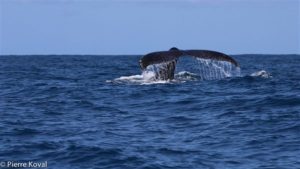
Don’t miss the opportunity to make this unforgettable encounter!
Every year, from mid-June.
Until the end of September, humpback whales leave the cold waters of Antarctica to reunite in the Sainte Marie Channel.
The purpose of this migration in the hundreds is to court, reproduce, and give birth to calves.
“The dance of the whales,” accompanied by melodic songs, is a unique experience that can be witnessed at this time of year. These whale mammals (Megaptera Novaengliae) have large pectoral muscles.
They measure over 14 meters and weigh about 30 tons each.
Encounter with the Whales
You are invited to discover an amazing marine fauna by observing humpback whales at sea.
Diving and snorkeling in Sainte Marie
Sainte Marie offers exceptional spots for marine fauna, you don’t have to be an experienced diver to appreciate the biological diversity of the island.
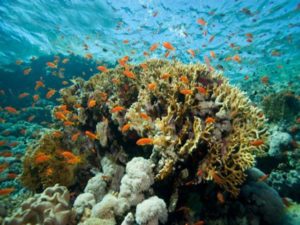
The world of diving will fascinate you as you seek a new and unique emotion. Experience diving in Sainte Marie. There are several interesting places to discover, with the sand islands being a must-see.
The most beautiful diving spots in Sainte Marie
SERAPIS: Located right in front of the town, we visit the remains of the sunken ship Serapis from 1781.
On the site, there are still five huge cannons with cannonballs and rum bottles. The anchor, which is impressively large, marks the spot of the shipwreck.
RAYS PALACE: 10 km from the channel, the wreck of a small fishing boat gathers an amazing variety away from the coral reef: you can find large pelagic species alongside giant stingrays, schools of Trevally, and Barracudas.
With a bit of luck, you may encounter magnificent eagle rays. A deep dive in the midst of the vast blue that will astonish lovers of immensity.
Island BARRACUDA: Barracuda is made up of a trio of small hills teeming with life at a depth of about 30 meters.
A large number of scorpionfish guard the site attentively, huge lobsters hide under the rocks to escape the fishermen’s desires, and octopuses change the colors of the landscape.
Between the hills, a modern pirate has deposited dozens of bottles, attracting small fish and, of course, their predators par excellence, the barracudas.
TREASURE ISLAND: This island is home to a variety of marine life, including colorful fish and vibrant coral reefs. Explore the depths and discover hidden treasures waiting to be found.
The underwater mountain rising from a depth of thirty meters looks like a pirate’s treasure. Covered largely with mushroom corals, it reminds us of coins scattered on the seabed. At its summit lies a large marbled moray eel settled in a barrel sponge. Surrounding it are green turtles, guitarfish, octopuses, and a variety of nudibranchs. Schools of surgeonfish complete the picture by dancing around the treasure trove. Explore more about diving activities in Madagascar at ÎLE AUX NATTES. Outside the lagoon of Île aux Nattes, this reef, less than twenty meters deep, resembles a treasure hunt. Remarkably large, the diver’s task is to inspect all the rocks in search of hidden treasures.
He will surely come across several stingrays, guitarfish or torpedoes, lobsters, and nudibranchs trying to hide.
The reef is also a passage for several green and hawksbill turtles that can be easily followed without much fuss.
If you’re lucky, it’s even possible to see a few hammerhead sharks.
Other attractions on Sainte Marie
In addition, you can take a dugout canoe ride through the mangrove. Explore the Museum of Ile Madame, visit the Blevec and Eiffel lighthouses, and much more in Saint Marie. Saint Marie can be included as an extension tour or as part of the itinerary upon request.

